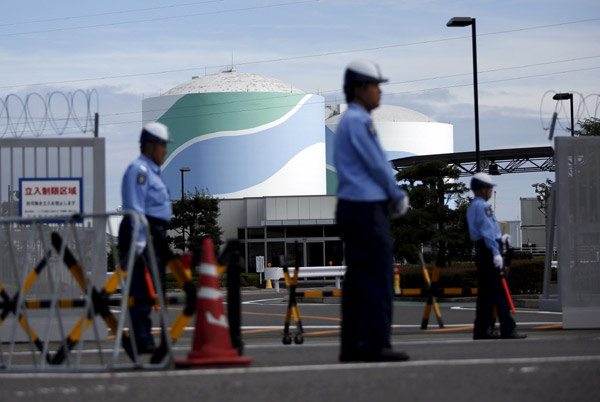Japan's Kyushu Electric begins loading reactor fuel
(Agencies) Updated: 2015-07-08 17:05
 |
|
Security officers stand guard in front of an entrance gate of Kyushu Electric Power's Sendai nuclear power station in Satsumasendai, Kagoshima prefecture, Japan, July 8, 2015. [Photo/Agencies] |
It also aims to have the 890-megawatt No 2 reactor running by mid-October. With both reactors operating, Kyushu will save about 15 billion yen ($122.24 million) in fuel costs per month, Sakata said, adding that the savings would come mainly from using less oil and LNG.
The reactors will generate about 1.3 billion kilowatt hours of power per month when fully operational, Sakata said, without giving further details.
Kyushu Electric's shares closed 6.3 percent higher on Tuesday, tracking gains in other utilities.
Hurdles, however, remain before the Sendai nuclear plant starts running, including possible failure of equipment that have not been used for more than four years. Further restarts at other reactors also face obstacles, including strong opposition among local residents and authorities and court injunctions.
Kyushu was initially expecting to start up the Sendai plant in late July, but then it postponed the restart, saying operational checks of some facilities would end later than previously announced.
Opinion polls show consistent opposition to nuclear power among Japan's public, even after electricity bills rose in the wake of the disaster.
The closure of Japan's reactors caused tens of billions of dollars in losses at utilities as they resorted to importing more fossil fuels for power generation and paid for upgrades to meet tightened safety rules.
($1 = 122.7100 yen)






